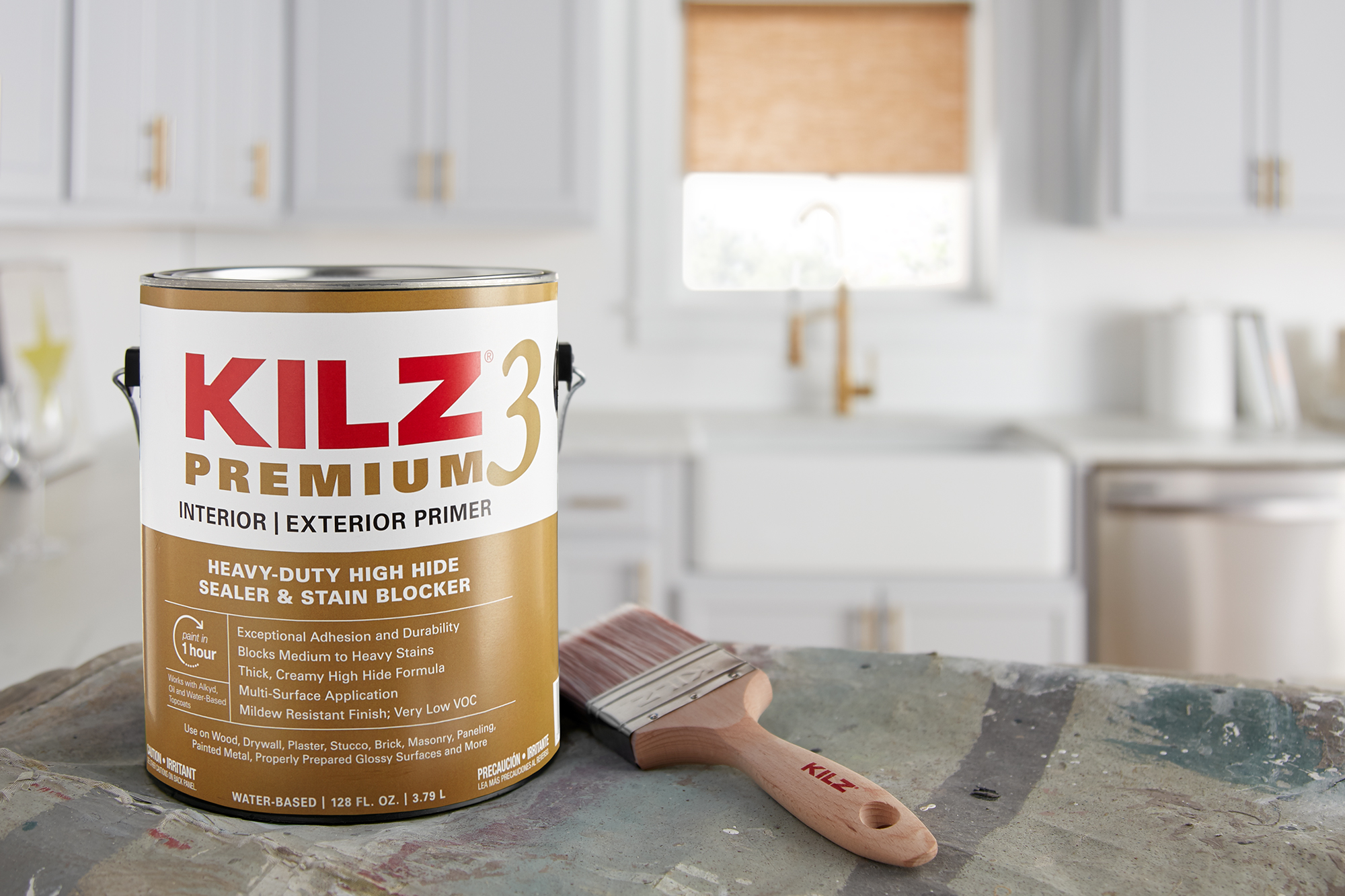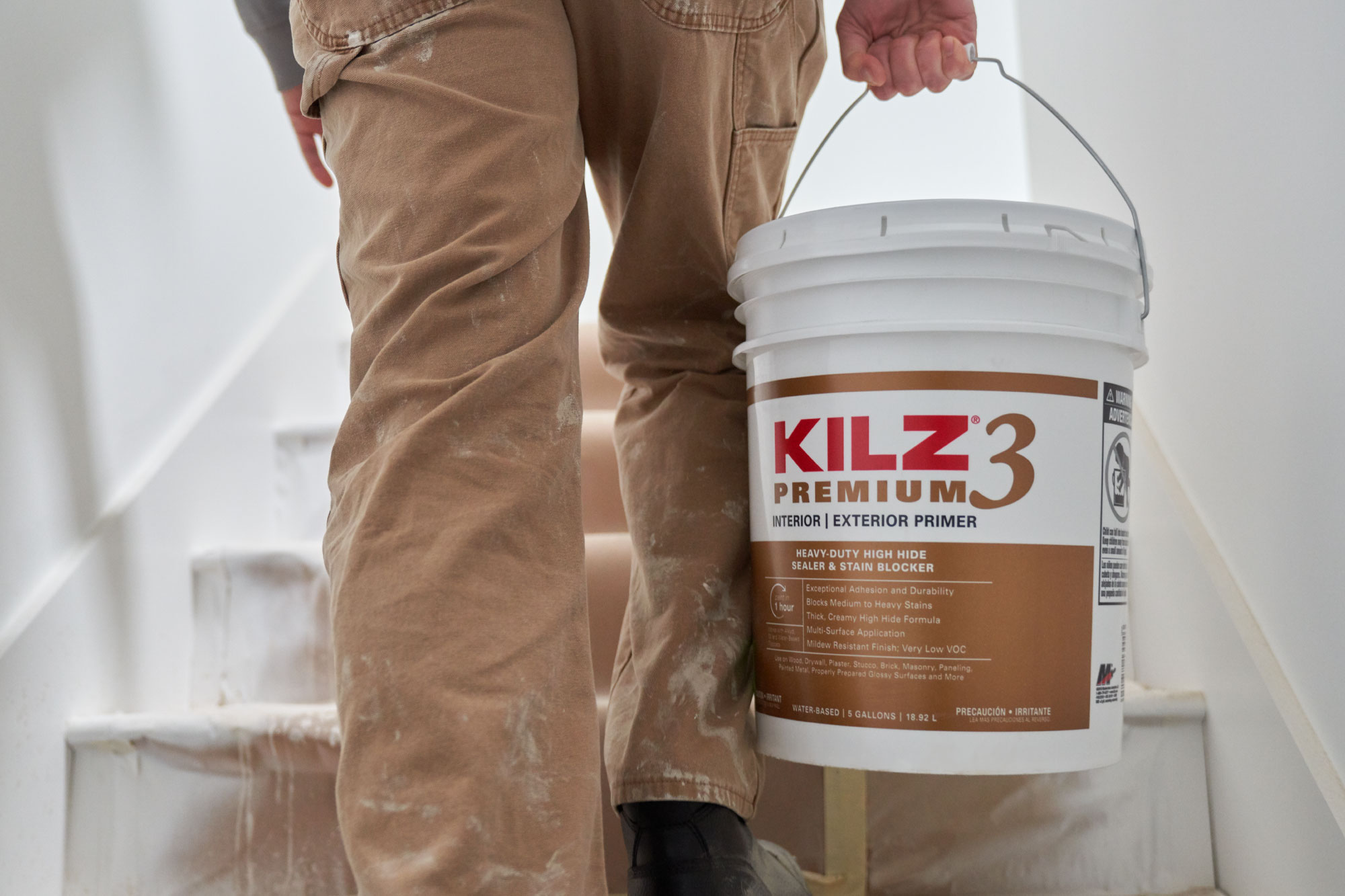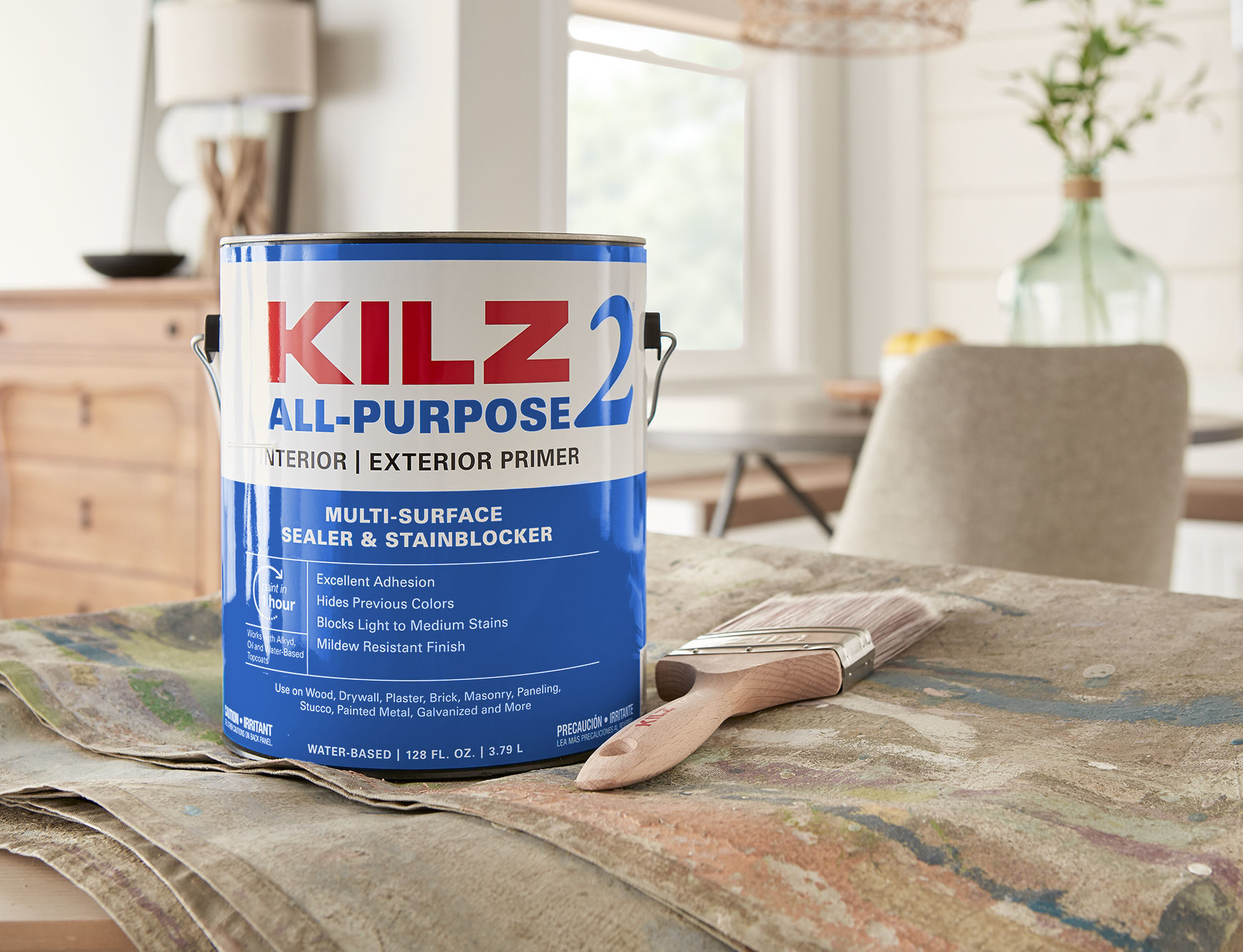Kilz Primer Types for Kitchen Cabinets

Choosing the right Kilz primer is crucial for achieving a durable and beautiful finish on your kitchen cabinets. The type of primer you select will significantly impact the final look and longevity of your paint job. Consider factors like the existing cabinet finish, the type of paint you’ll be using, and your desired level of stain-blocking.
Kilz Primer Comparison
Selecting the appropriate Kilz primer depends on your specific needs. The following table compares three popular options, highlighting their key features to help you make an informed decision.
| Primer Type | Key Features | Drying Time | Best Use Case |
|---|---|---|---|
| Kilz Original | Excellent stain-blocking, good adhesion, oil-based | 4-6 hours | Covering strong stains, heavily-worn surfaces, or bare wood. |
| Kilz 2 Premium | Low VOC, excellent adhesion, water-based, good stain-blocking | 1-2 hours | General-purpose priming, low-odor application, use with water-based paints. |
| Kilz PVA Primer | Water-based, excellent adhesion to glossy surfaces, low VOC | 1-2 hours | Priming glossy surfaces, ensuring proper paint adhesion. |
Water-Based vs. Oil-Based Kilz Primers
Water-based and oil-based Kilz primers offer distinct advantages. Water-based primers, like Kilz 2 Premium, are generally preferred for kitchen cabinets due to their low VOC content, resulting in less odor and better indoor air quality. They also clean up easily with soap and water. Oil-based primers, such as Kilz Original, offer superior stain-blocking properties and are more durable, but they have a stronger odor and require mineral spirits for cleanup. For kitchen cabinets, the balance between ease of use and stain-blocking often favors water-based, particularly if the existing finish isn’t heavily stained or damaged.
Primer Selection Based on Existing Cabinet Finish
The existing finish on your kitchen cabinets significantly impacts primer selection. Glossy or semi-gloss surfaces require a primer with excellent adhesion to prevent peeling. A water-based primer designed for glossy surfaces, such as Kilz PVA Primer, is ideal in this situation. For matte or already primed cabinets, a general-purpose primer like Kilz 2 Premium will usually suffice. For cabinets with significant water damage or severe stains, an oil-based primer like Kilz Original may be necessary to provide a robust base for your paint. Proper surface preparation, including sanding, is always recommended before priming, regardless of the existing finish.
Application Techniques and Preparation: Best Kilz Primer For Kitchen Cabinets

Transforming your kitchen cabinets with a fresh coat of paint starts with proper preparation. Using Kilz primer ensures a smooth, even finish and optimal paint adhesion, resulting in a professional-looking outcome that will last. Careful preparation is key to achieving the best results. This section details the essential steps for preparing your cabinets and applying Kilz primer flawlessly.
Best kilz primer for kitchen cabinets – Proper preparation is the cornerstone of a successful painting project. Taking the time to thoroughly clean, sand, and fill imperfections will significantly impact the final look and longevity of your paint job. A well-prepared surface ensures even primer adhesion, preventing peeling and chipping, and ultimately leading to a stunning transformation.
Cabinet Preparation Steps
Before applying any primer, your cabinets must be meticulously prepared. This process involves several crucial steps that guarantee a flawless finish. Failing to complete these steps can result in an uneven, unprofessional-looking final product.
- Clean the Cabinets: Begin by thoroughly cleaning your cabinets to remove grease, grime, and any existing finishes. Use a degreasing cleaner and a soft cloth or sponge, paying close attention to handles, knobs, and hard-to-reach areas. Rinse thoroughly with clean water and allow to dry completely. This ensures the primer adheres properly and prevents bubbling or peeling.
- Sand the Cabinets: Once dry, lightly sand the cabinet surfaces using fine-grit sandpaper (180-220 grit). This step creates a slightly rough surface that improves primer adhesion. Focus on smoothing any raised areas or imperfections. Avoid excessive sanding, which can damage the cabinet surface. Wipe away sanding dust with a tack cloth before proceeding.
- Fill Imperfections: Use wood filler to repair any dents, scratches, or holes in the cabinet surfaces. Allow the filler to dry completely according to the manufacturer’s instructions, then lightly sand the filled areas smooth, ensuring a seamless transition with the surrounding surface. This step is crucial for a professional-looking finish.
- Prime the Cabinets: After the surfaces are clean, sanded, and repaired, you’re ready to apply the Kilz primer. Ensure the cabinets are completely dry and free of dust before beginning.
Kilz Primer Application Techniques
Applying Kilz primer correctly is vital for achieving even coverage and a professional finish. Different application methods offer unique advantages, and choosing the right one depends on your skill level, the size of the project, and the desired finish.
Imagine the difference between a smoothly primed surface, reflecting light evenly, and one with streaks and drips. The application technique directly impacts this visual difference. Proper technique ensures a uniform color and texture, creating the perfect base for your topcoat.
- Brush Application: A brush provides excellent control, especially in corners and hard-to-reach areas. Use a high-quality brush with soft bristles to avoid leaving brush strokes. Apply thin, even coats, allowing each coat to dry completely before applying the next. This method is ideal for detailed work and smaller projects.
- Roller Application: A roller is efficient for larger surfaces and provides a smooth finish. Use a high-quality roller cover with a nap suitable for smooth surfaces. Apply even, overlapping strokes to ensure complete coverage. Avoid overloading the roller to prevent drips and runs. This method is best suited for large, flat surfaces.
- Spray Gun Application: A spray gun offers the fastest and most even coverage, particularly for large projects. However, it requires practice to master and proper ventilation is essential. Maintain a consistent distance from the surface and use a low pressure setting to prevent overspray and runs. This method is ideal for large projects where efficiency is paramount, but requires experience.
Ideal Cabinet Surface Before and After Priming
Before priming, the cabinet surface should be clean, free of grease and debris, and any imperfections should be repaired. The color will be inconsistent, showing variations in the original finish and any repairs. The texture might be uneven, with scratches, dents, or raised areas. After priming with Kilz, the surface will be uniformly colored, typically a light gray or off-white, depending on the type of Kilz primer used. The texture will be smooth and even, with all imperfections filled and sanded smooth. The overall appearance will be clean, consistent, and ready for the final paint application. The primed surface will be significantly more uniform in color and texture than the pre-primed state, providing an excellent base for the top coat of paint.
Addressing Specific Cabinet Issues

Kilz primers offer a powerful solution for tackling a wide range of cabinet imperfections before painting. Their superior adhesion and stain-blocking properties make them ideal for preparing kitchen cabinets for a flawless finish, regardless of pre-existing damage. This section details how to effectively use Kilz primers to address common cabinet issues and achieve professional results.
Stubborn Stains and Water Damage
Water damage and stubborn stains, such as those from grease or coffee, often penetrate the cabinet’s surface, requiring a robust primer to effectively seal them. Kilz Original primer, with its exceptional stain-blocking capabilities, is the ideal choice. Apply two coats, allowing each to dry completely before applying the next. For particularly stubborn stains, a light sanding between coats can improve adhesion and ensure complete coverage. This process creates a smooth, even surface ready for your topcoat, preventing the stains from bleeding through. For severe water damage, consider using Kilz Premium primer, which offers even greater protection against moisture penetration.
Kilz Primer Performance Comparison, Best kilz primer for kitchen cabinets
Different Kilz primers excel in addressing various cabinet issues. Kilz Original effectively covers most stains and minor imperfections. For grease stains, Kilz Premium’s superior blocking power prevents the grease from seeping through. Nicotine discoloration, often stubborn and deeply ingrained, responds well to Kilz Latté, specifically formulated for odor and stain control. For cabinets with previous paint failures, where adhesion is a concern, Kilz Adhesion primer provides a strong bonding layer, ensuring the new paint adheres properly and doesn’t peel.
Troubleshooting Priming Problems
Proper preparation and application are key to avoiding common priming problems. Here’s a guide to troubleshooting and prevention:
Addressing common issues during the priming process is crucial for a successful paint job. Following these guidelines ensures a smooth, even finish and prevents costly rework.
- Uneven Coverage: This often results from insufficient stirring or thin application. Ensure the primer is thoroughly mixed and apply even coats using a high-quality brush or roller.
- Bubbling: Bubbling can occur due to applying primer over a damp surface or applying too thick a coat. Ensure cabinets are completely dry before priming, and apply thin, even coats, allowing adequate drying time between coats.
- Poor Adhesion: Poor adhesion may indicate a dirty or greasy surface. Clean the cabinets thoroughly with a degreaser before priming. Using the appropriate Kilz primer for the specific issue (e.g., Kilz Adhesion for previously painted surfaces) also improves adhesion.
- Lap Marks: Lap marks appear when wet edges of freshly applied primer meet previously applied, partially dried primer. To prevent this, work in smaller sections, ensuring wet edges blend smoothly. Avoid overworking the primer once it begins to dry.
